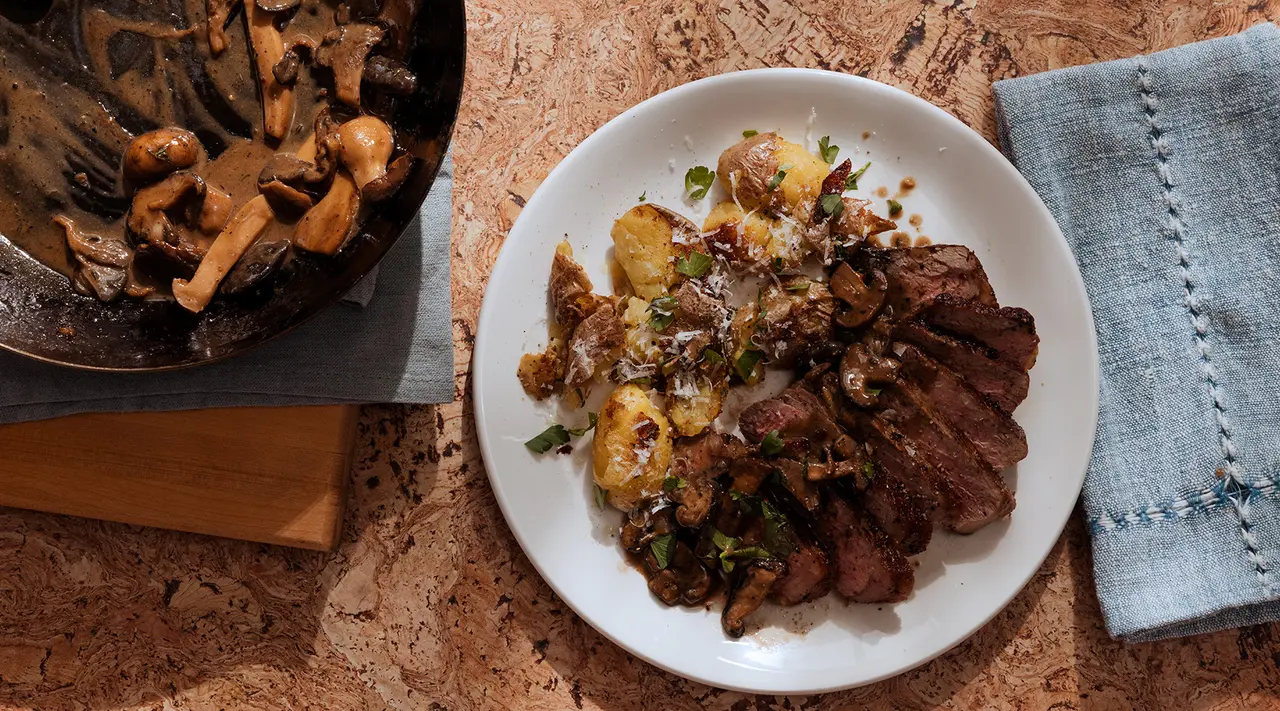One of the best things about ordering proteins at a restaurant is the perfectly browned sear these dishes come with. This crust, known as the Maillard reaction, can just as easily be achieved at home, while still maintaining a juicy, tender interior—all you need is a little science to master it fully.
We’ll break down how this reaction works and how to achieve it in your kitchen, so you can get restaurant-worthy poultry, steak, potatoes, or vegetables every time.
What Is the Maillard Reaction?

Simply put, the Maillard reaction is a chemical interaction between amino acids and reducing sugars that requires the addition of heat. The Maillard reaction starts to occur above 285F, which is why most meats call for cooking temperatures of medium to high. This causes a browned crust on your food, similar to the process of caramelization.
Caramelization vs. Maillard Reaction
Though they both sound similar and have similar outcomes, caramelization is simply the oxidation of certain sugars, and doesn't involve amino acids. The Maillard reaction changes not only the color of your food, but also adds flavor. Especially when cooking meat, foods that don’t achieve a Maillard reaction will be less flavorful.
How to Achieve the Maillard Reaction

Though it may sound like you need years of culinary school under your belt to achieve a Maillard reaction at home, you really need just three things to make this reaction work properly in your kitchen.
Draw Out Moisture
To get a great sear on your protein, you’ll want it to be as dry as possible. After rinsing, pat your ingredients down thoroughly with a paper or dish towel and let them dry completely before cooking.
If you’re cooking steaks or other large cuts of meat, we recommend salting and letting them air dry in the fridge for a few hours (or up to a day) prior to cooking. Not only does this ensure well-seasoned meat, the salt helps thoroughly dry out moisture for an ideal sear.
Heat Properly
The perfect sear begins with heating your pan properly. Slowly heat a carbon steel or stainless frying pan with a neutral, high-smoke point oil (like canola or grapeseed) until it’s very hot before adding your protein. If you’re using a Stainless Clad Pan, let your pan heat thoroughly before adding your oil. Usually about two minutes, or when the surface begins to shimmer, is enough time for your oil to heat up.
A well-constructed pan will conduct heat evenly across its surface, allowing the amino acids and sugars to react. This produces the complex, savory flavors you’re looking for with a crusty sear.
Adequate Time
Maillard reactions can occur over both short and long periods of time. You can slowly simmer a stock in a Dutch oven and achieve a Maillard reaction over a few hours, or you can use a stainless or carbon steel frying pan to achieve this reaction on your proteins in under half an hour.
Remember that patience is a virtue when it comes to the Maillard reaction—if you add your meat to your pan too early, you won’t get that signature crust.
Once you have the big three of the Maillard reaction on your side, you can let science (and your cookware) take over. If you’re using a Stainless Clad Pan, your food will release from the surface when it’s developed a crust, which makes achieving a sear even easier. You also don’t need a cut of meat to achieve a Maillard reaction—you can get this with large vegetables, like a head of cauliflower; or with smaller ingredients like potatoes.
Ready to Cook?
Now that you know how to achieve the scientifically-proven perfect sear every time, you can confidently cook your proteins knowing you’ll get a crisp, crunchy outside and a juicy, tender interior. All you need is the right pan, the right ingredients, and a bit of patience.






























